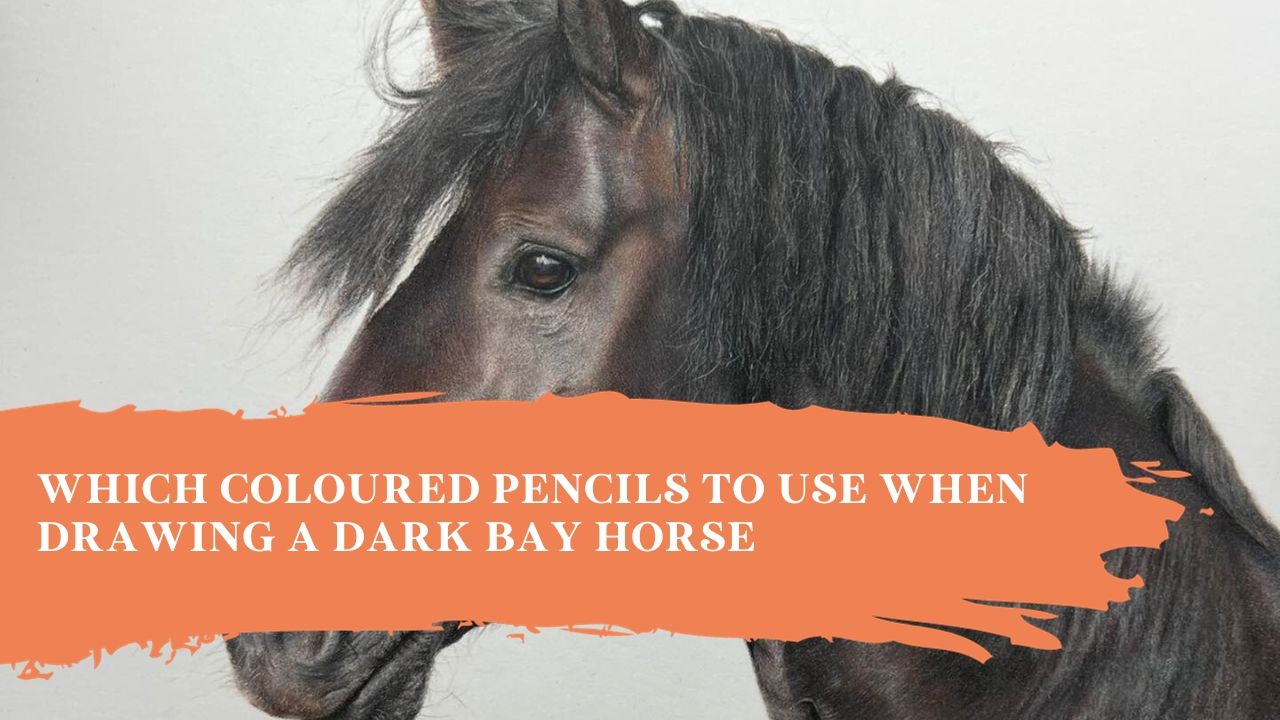Which Coloured Pencils to Use When Drawing a Dark Bay Horse | Colour Recipe
Nov 10, 2023
Picking what colours are going to work best for your drawing is a skill that you can develop over time and often through trial and error. That being said, sometimes you want a bit of guidance to help get you started on the right foot! Something I get asked regularly is for help choosing what colours work best when drawing a dark bay, so let me share my colour recipe with you!
I have discussed colour choices for drawing a bright bay horse before, but when it comes to a dark bay, although they still have some lovely bright tones in their coats, they also have those deep browns and dark reddish shades.
As with most animals, horses exhibit a wide range of colours and one of the most important things to consider is the lighting. Whether that is from the sun or perhaps lighting in an arena, it needs to be taken into account because it’s going to create highlights on the horse across their muscle contours and any sweaty patches.
In a dark bay, there can be reddish areas that gradually merge into more yellowish tones, and maroon, brown, and purple shades as well with the challenge being to ensure a soft, seamless blend between these colours, rather than abrupt transitions.
From the Polychromos range colours like Burnt Ochre, Venetian Red, Caput Mortuum Violet, Brown Ochre, and Nougat can work really well when drawing a dark bay. To create depth, layering Caput Mortuum Violet or even a Dark Indigo over your reddish areas will work brilliantly and give a really rich, burgundy-like appearance.
If the horse is in a field you will want to incorporate some green reflections which can be achieved by using colours like a Terracotta, Burnt Ochre, or Walnut Brown, with little hints of Dark Indigo.
If you have Studio pencils, consider using burnt yellow ochre, Venetian red, and raw umber as an initial base around certain areas. The goal is to blend the reddish tones into the orangy areas and then into the darker shades. This will create a smooth transition and don't hesitate to add some scarlet tones in the shadowy areas to bring vibrancy to the piece. Remember to use a variety of colours, spanning different spectrums, to help you achieve a realistic portrait.
If you’re looking for some more colour recipes, make sure to have a look at one of my other blogs, 5 Colour Recipes to Help You Draw More Realistic Animals, and remember, it's important to experiment with different hues to capture the nuances and subtleties of their coat. Happy drawing!
Ignite by Bonny Snowdon
...is the ultimate membership for those wanting to improve their Coloured Pencil Skills, increase their confidence and realise their dreams!
....................
Join our mailing list to receive the latest news and updates from our team. Don't worry, your information will not be shared.



